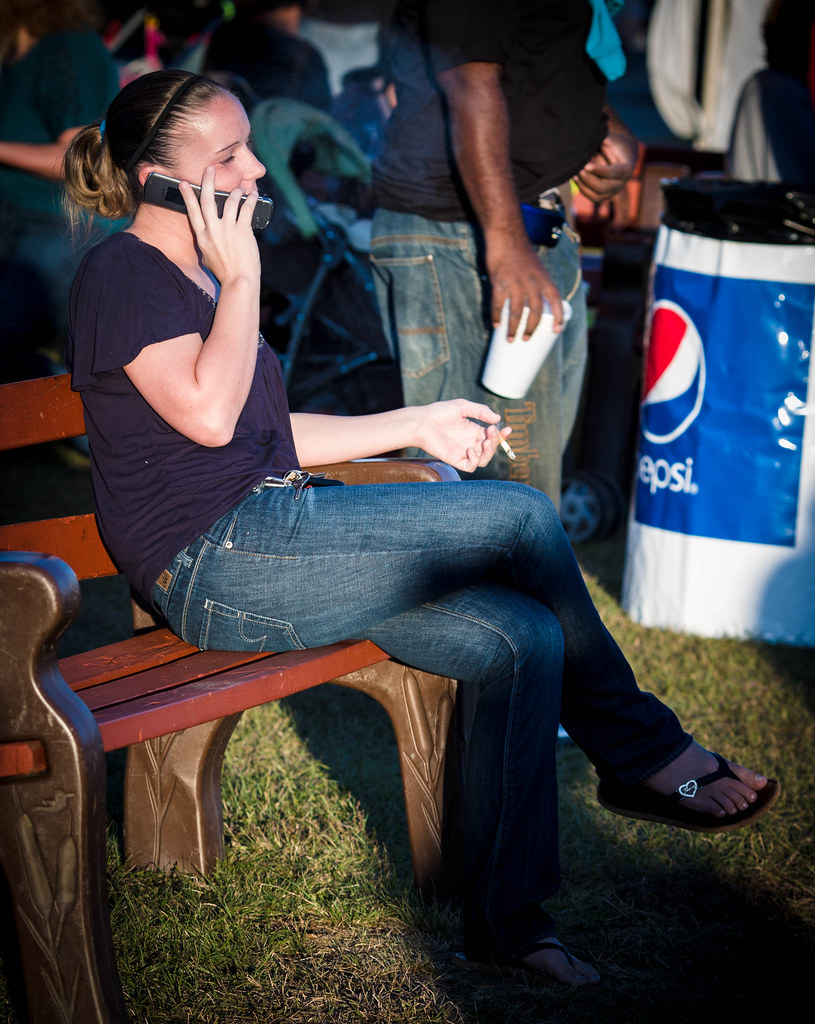
Every generation, it seems, can’t help but look at the younger folks and think, “Kids today!” We’ve all been there, shaking our heads at what seems like a slipping grasp on those basic social graces that once felt as automatic as breathing. But let’s be real, something genuinely different is happening right now. The digital age hasn’t just tweaked things; it’s fundamentally shifted how children interact with the world, and some of those time-honored courtesies? They’ve quietly started to vanish from our daily lives.
These aren’t just dusty, old-fashioned rules designed to make everyone feel stuffy. Oh no, these are the very threads that weave our communities together, making interactions smooth and ensuring everyone feels respected and valued. Modern kids are absolute whizzes at technology, capable of navigating global connections in ways that would make our grandparents’ jaws drop. Yet, amidst all this tech-savvy brilliance, some essential interpersonal skills have, ironically, fallen by the wayside. It’s a disconnect that’s becoming increasingly apparent, not just in homes but even in classrooms.
So, what gives? Why are these fundamental behaviors seemingly disappearing from childhood education? Let’s take a deep dive into some of the most crucial manners that are, sadly, becoming rare gems in today’s fast-paced world. We’re talking about the simple, yet profound, actions that build character, foster empathy, and create a more considerate society. Get ready to reminisce, reflect, and maybe even reignite a passion for politeness, because these are the vanishing courtesies we absolutely need to bring back.

1. **Writing Thank You Notes**Remember the days when getting a gift meant you immediately thought about penning a heartfelt thank you? Handwritten thank you notes have become about as common as rotary phones, and that’s saying something! Today’s kids might fire off a quick text or, more likely, just toss an emoji someone’s way to acknowledge a present or kindness. But let’s be honest, that doesn’t quite capture the same thoughtful sentiment as a carefully crafted note.
This isn’t just a simple shift in communication preferences; it represents the loss of a beautiful ritual. This practice once taught children to pause, reflect on the kindness they’d received, and then articulate their appreciation in a truly meaningful way. It was a lesson in gratitude that went beyond mere words, encouraging a deeper understanding of the effort and generosity behind a gift or gesture.
Without this practice, kids miss out on developing that reflective muscle. They don’t get the chance to sit down, organize their thoughts, and express genuine appreciation with intention. It’s a skill that builds character, teaches foresight, and reinforces the value of personal connection in a way that a fleeting digital message simply cannot replicate. Sending a thank you note says, “I truly saw and appreciated your effort.”
Read more about: The Essential 15: Unlocking Success by Asking the Right Questions to Your Potential Business Partner

2. **Standing When Adults Enter the Room**This one might feel like it’s straight out of a period drama, but it was once a traditional sign of respect that children were expected to observe. Standing when an adult entered the room taught kids to acknowledge authority and show consideration for their elders. It was a subtle yet powerful gesture that communicated reverence and attentiveness.
Modern parenting often champions equality between children and adults, and while there are certainly positive aspects to this approach, it sometimes inadvertently eliminates gestures that demonstrated awareness of others. This practice helped kids develop a keen situational awareness, teaching them that certain moments and individuals call for a special level of attention and respect, not because one is ‘better’ than the other, but because roles and relationships warrant different forms of acknowledgment.
The lesson extended beyond just standing. It instilled an understanding of social hierarchies and the nuances of respectful interaction. It was about recognizing the presence of another person and adjusting one’s behavior to show honor. Losing this practice means losing a tangible way for children to express deference and learn to navigate the subtle dance of social respect.
Read more about: Mastering Live Streams: Unpacking 13 Key Reasons Your Broadcasts Face Takedowns and How to Stay Online

3. **Asking Permission Before Taking Food or Items**Picture this: a child, eyeing a plate of cookies, automatically asking, “May I have a cookie?” or “Can I get a snack?” before helping themselves. This simple courtesy, once commonplace even in their own homes, taught children invaluable lessons in impulse control, consideration for household resources, and respect for family meal plans. It showed an awareness that resources are shared and not always limitless.
Today, a more casual approach to food access means kids often miss out on learning about boundaries, sharing, and the importance of checking in with others before simply taking what they want. This isn’t just about food; it’s a foundational lesson in respecting others’ possessions and space, and understanding that not everything is freely available for the taking, especially without a quick, polite inquiry.
This practice is crucial for developing a sense of communal living and empathy. It helps children understand that their desires exist within a family or group context, and that their actions can impact others. It’s about building a habit of consideration, ensuring that actions are thoughtful rather than purely impulsive, laying the groundwork for respectful interactions in all areas of life.
Read more about: Timeless Table Manners: Unpacking 12 Essential Dinner Rules That Transform Family Mealtimes

4. **Proper Phone Etiquette & Digital Device Use**Before smartphones became these magical pocket computers, kids learned very specific ways to answer the phone, take messages, and speak clearly to callers. They’d practice phrases like, “May I ask who’s calling?” and “Please hold while I get them.” These weren’t just rote phrases; they were skills that taught responsibility, clear verbal communication, and how to be a helpful link between people.
Fast forward to today, and modern kids rarely use phones for actual conversations. The result? They’re missing out entirely on developing these essential verbal communication and etiquette skills. What’s more, the ubiquity of devices has led to new challenges. How often do you see someone having a LOUD conversation in public, or someone Facetiming without a care for who’s inadvertently in their video call?
Then there’s the pervasive issue of staring at screens. Children need to learn that when they are in the presence of others, it’s important to put their phone away and take earbuds out, as Arden Clise, president of Clise Etiquette, pointed out. This shows respect and interest in the other person, and critically, gives children the opportunity to practice eye contact, listening, and conversation skills. The etiquette around technology in school, too, is a relatively new but vital area that’s often overlooked.
Read more about: Oops! Unmasking 14 Hilarious (and Mortifying) Zoom Fails That Every Remote Worker Can Relate To

5. **Offering Seats & Holding Doors for Others**This is one of those classic acts of kindness that warms your heart to see, but has become sadly uncommon. The courtesy of giving up a seat for elderly people, pregnant women, or anyone who needs it more – or simply holding a door open for someone behind you, especially an adult, an elder, or someone carrying heavy items – seems to be fading. These practices taught kids to observe their surroundings and recognize others’ needs.
They learned to act with consideration even when it meant a small personal sacrifice of comfort or time. The lesson here went far beyond just seat-giving or door-holding; it developed empathy and instilled the habit of putting others’ comfort before their own convenience. It’s about being mindful and helpful, spotting situations where others might need a hand, and actually offering it.
This ingrained habit of helpfulness sets kids on the path toward becoming responsible and compassionate adults. It cultivates an awareness that being helpful makes communities function better and fosters a sense of collective well-being. These small, seemingly insignificant gestures are powerful indicators of a thoughtful and considerate individual, yet they’re often not explicitly taught anymore.
Read more about: Buyer’s Remorse: 15 Cars Drivers Absolutely Regret Parking in Their Driveways

6. **Waiting to Be Served & Taking Turns**Remember when children patiently waited for adults to serve them food or drinks, rather than impulsively reaching across the table or helping themselves first? This restraint was a masterclass in patience, respect for social order, and consideration for everyone else at the table. It implicitly taught that good things come to those who wait, and that rushing ahead of others is simply poor form.
This practice extends beyond the dinner table to the broader concept of taking turns and not cutting lines. Unfortunately, it seems some children might see adults bypassing these little rules that keep society running smoothly and think, “If an adult did it, then I can too.” Parents need to actively teach kids that this kind of behavior is wrong, reinforcing the importance of fairness and respect for order.
Whether it’s waiting for your plate at a meal or waiting your turn in a queue, these lessons are fundamental to peaceful social interaction. They teach self-control, respect for others’ time and space, and an understanding of communal dynamics. Without these foundational experiences, children may struggle with frustration and an underdeveloped sense of fairness, impacting their ability to navigate group settings smoothly.
Read more about: Elevate Your Ride: Simple Secrets to Painting Your Brake Calipers Like a Professional

7. **Addressing Adults Formally & Using Proper Titles**There was a time when kids automatically addressed adults as ‘Mr.’, ‘Mrs.’, or ‘Miss’ followed by their last name, unless explicitly invited to do otherwise. This simple formality taught children to recognize different types of relationships and showed appropriate respect for authority figures. It was a clear linguistic marker of social hierarchy and demonstrated respect through language.
While modern approaches sometimes encourage more casual interactions, losing this formal address system means losing a clear way for kids to understand and demonstrate respect for different roles. As the context highlights, “It’s important to instill a sense of respect by teaching kids to remember and use other people’s names, and titles if they have them.” This applies not just to teachers, but to any adult they encounter.
This courtesy helps children understand their role in social settings and how to show deference in an appropriate manner. It’s about more than just a title; it’s about acknowledging the experience and position of an elder or authority figure. Without this distinction, interactions can become overly casual, blurring lines that were once understood to be important for fostering mutual respect and appropriate conduct.
Alright, so we’ve journeyed through some of those classic courtesies that seem to have taken a backseat in the rush of modern life. But here’s the thing: while we might pine for the days of handwritten thank you notes and formal greetings, the social landscape itself has drastically transformed. We’re now navigating a world deeply intertwined with technology, where “face-to-face” often means a video call and our digital footprint can speak louder than our words.
It’s not just about lamenting what’s lost; it’s about actively equipping our kids with the social savvy they need to thrive in *this* reality. The rules of engagement have evolved, and mastering them is more crucial than ever for fostering genuine connections, personal accountability, and a considerate online and offline presence. Let’s dive into seven more essential manners that aren’t just relics of the past but vital skills for today’s digitally-driven, diverse, and dynamic world. These are the ones that truly define navigating the new social landscape.
Read more about: Navigating a Total Loss: Your Comprehensive Consumer Guide to Car Accidents and Insurance Settlements

8. **Conversation Skills**The ability to hold a meaningful conversation? It’s like a superpower in a world glued to screens, and sadly, it’s one of the most requested skills for training new associates, as Lisa Richey, president and founder of Mannerstogo.com, pointed out. She highlights that “Students are not engaging in conversation with other children or adults,” attributing this decline largely to our pervasive overuse of devices. Imagine missing out on the joy of a good chat because a phone feels more comfortable than actual human interaction!
This isn’t just about awkward silences at family dinners; it has serious implications for their future. Richey emphasizes that “New-hires are not entering the business world knowing how to interact with co-workers or clients.” Think about it: every job interview, every team meeting, every networking event hinges on the ability to connect verbally. Without these foundational skills, kids are genuinely at a disadvantage, struggling to articulate their thoughts, listen actively, or even maintain eye contact.
Establishing standards in classrooms to encourage human connection is vital, and it needs to start early. These skills aren’t just for career success; they build empathy, foster understanding, and help children navigate personal relationships. They teach kids how to negotiate, how to share ideas, and how to resolve conflicts, all through the power of thoughtful dialogue. It’s about empowering them to truly engage with the world around them, not just scroll through it.
Read more about: 15 Simple Steps to Master the Art of Public Speaking: Your Practical Guide to Confidence and Impact

9. **Learn How to Give a Proper Handshake**In an age where so much communication happens virtually, the simple, direct act of a handshake remains a powerful signifier. It’s a moment of human connection, a non-verbal greeting that can convey confidence, respect, and approachability. Lisa Richey, from Mannerstogo.com, strongly advocates for teaching this, stating that handshakes and greetings “develop leadership and instills self-confidence in students and provides a human connection in our world of devices.” It’s more than just a gesture; it’s an immediate impression.
Think about the difference a firm, confident handshake makes versus a limp, hesitant one. It speaks volumes without a single word being uttered. For children, mastering this skill early is invaluable. It prepares them for meeting new teachers, making new friends, and eventually, entering the professional world. It’s about teaching them how to confidently present themselves and connect with others in a physical, tangible way that transcends digital barriers.
This practice fosters an understanding of professionalism and respect that extends far beyond the moment itself. It instills a sense of gravitas and self-assurance that can be carried into various social and professional settings. In a world where digital interactions often lack the warmth and immediacy of in-person contact, a proper handshake is a grounding experience that reaffirms the importance of genuine human connection, helping kids feel more secure and capable in their interactions.
Read more about: 14 Genius Negotiation Tactics You Can Totally Use in Your Everyday Life

10. **Know When to Use Cameras Respectfully**We live in the era of constant content creation, where every moment feels like an opportunity for a photo or video. But this digital enthusiasm often means that the etiquette around using cameras respectfully has completely gone out the window. It’s a crucial lesson that today’s younger generations, who “do not know life without a device,” desperately need guidance on, according to Lisa Richey. They might be connected to the world, but they need to learn *how* to connect respectfully.
The core of this manner is simple: consent and consideration. Richey outlines it perfectly: “Those behind the lens need to ask if they can take a photo…those in front of the camera need to kindly communicate if they do not want to be in the picture.” It’s about recognizing that people aren’t just props in your personal narrative or background extras in your “content.” Their privacy and comfort matter, and a quick “May I?” goes a long way.
This extends beyond just taking pictures; it’s about the pervasive culture of recording. We’ve all seen, or been in, situations where people are Facetiming loudly in public, or capturing video in changing rooms, gym locker rooms, or saunas, as highlighted in the context. This isn’t just rude; it can be a serious invasion of privacy and a health hazard in certain sensitive places. Teaching children to pause, observe their surroundings, and get permission before snapping or filming is absolutely vital for fostering respect and safety in our shared spaces. It’s about building a digital conscience.
Read more about: Master Reverse Parking Flawlessly: The Expert-Approved ‘Clever’ Hack You Need to Know

11. **Don’t Text and Drive**Okay, this isn’t just about good manners; it’s about life and death, but it absolutely belongs in the realm of “responsible technology use” and “personal accountability.” While learning about general texting etiquette is important, it’s crucial for older students in high school to grasp the profound danger of texting and driving. The context explicitly states that “The punishment for texting while driving can become as severe as drunk driving, and for good reason.” This isn’t a minor social faux pas; it’s a catastrophic lack of judgment.
Being distracted on the road goes far beyond a mere breach of etiquette; it directly impacts the safety of everyone around you – passengers, other drivers, pedestrians. It requires teaching a deep sense of responsibility and foresight, understanding that a quick glance at a screen can have irreversible consequences. This lesson underscores the critical importance of prioritizing safety over immediate gratification, and recognizing that personal actions have broad societal implications.
It’s about cultivating a mindset where responsible device use is paramount, especially when operating heavy machinery. This particular manner teaches accountability at its highest level, emphasizing that the convenience of digital communication never outweighs the sanctity of human life. By instilling this crucial rule, we equip young people with the awareness and discipline to make choices that protect themselves and their communities, reinforcing that true maturity involves making safe and considerate decisions, even when no one is watching.
Read more about: Your Ultimate Blueprint: 14 Killer TikTok Hacks to Grow Your First 1000 Followers!

12. **Improve Your Posture**While it might seem like a small detail, the way we carry ourselves sends a powerful message, and teaching children good posture is an often-overlooked aspect of social awareness and respect. As Lisa Richey points out, poor posture can indicate a lack of engagement: “A teacher should not lookout in her classroom with students slouched and leaning over their desks.” Our body language is a silent communicator, and it’s important for students to realize this.
Good posture isn’t just about looking neat; it communicates attentiveness, confidence, and respect for the environment and the people within it. When a child sits up straight, it shows they are present, ready to learn, and acknowledge the authority or speaker in the room. This isn’t about rigid formality, but about recognizing that how one presents oneself physically influences how they are perceived and, importantly, how they feel.
Instilling this habit helps children develop a greater awareness of their physical presence and its impact on others. It’s a foundational element of social grace that contributes to an overall sense of polish and respect in any setting, whether it’s a classroom, a job interview, or a social gathering. By encouraging good posture, we’re teaching kids to communicate competence and consideration non-verbally, reinforcing the idea that every aspect of our presentation matters.
Read more about: Revitalize Your Ride: 12 Game-Changing Interior Mods to Make Your Car Look Years Newer for Less

13. **Acknowledge and Respect Cultural Differences**In our increasingly globalized world, fostering an understanding and respect for cultural differences is no longer just a nice-to-have; it’s an absolute necessity. Children today grow up interacting with peers from vastly diverse backgrounds, making this manner paramount for building inclusive and harmonious communities. Lisa Richey advocates for this, advising, “Respect all cultures and be open to what we can learn from others with a diverse background.” It’s about expanding horizons and celebrating the richness that diversity brings.
This manner teaches children more than just tolerance; it cultivates genuine curiosity and empathy. It encourages them to move beyond their own experiences and consider different perspectives, traditions, and ways of communicating. Understanding that manners and etiquette can vary widely across different cultures is crucial to avoiding inadvertent offense and fostering positive interactions, preventing misunderstandings that can arise from differing social norms.
By actively learning about and respecting other cultures, children develop a profound sense of social awareness and personal accountability. They learn that their actions and words have different meanings in different contexts, and they become more adept at navigating complex social situations with grace and sensitivity. This skill is vital for success in school, in the workplace, and in an interconnected world where cross-cultural collaboration is the norm. It truly equips them for “beyond” the immediate digital age, preparing them to be global citizens.
Read more about: Beyond the Marquee: Unpacking 15 Infamous Co-Star Clashes That Rocked Hollywood’s Biggest Sets

14. **Don’t Ghost Someone**In the digital age, it might feel easier to just cease contact or ignore messages when a connection becomes inconvenient or uncomfortable. But the practice of “ghosting” someone, simply disappearing without explanation, is a clear breach of modern social etiquette and deeply impacts “personal accountability” in communication. As Myka Meier, founder and director of Beaumont Etiquette, advises, it’s never a good idea to leave a friend wondering why you stopped communicating. It’s a habit that undermines trust and respect.
While it might be tempting to avoid an awkward conversation, ghosting demonstrates a significant lack of consideration for another person’s feelings. Meier emphasizes the importance of taking the high road if you’ve been ghosted: “If you have been ghosted or are waiting for a reply, we never respond with bad etiquette through more bad etiquette.” Instead of retaliating, it’s about giving the person space and moving on, but the core lesson for young people is to *not* be the ghoster in the first place.
This manner teaches children about the responsibility that comes with communication, even digital communication. It’s about respecting other people’s time and emotional investment, and understanding that clear, albeit sometimes difficult, communication is always preferable to silence. It fosters emotional intelligence and accountability, ensuring that children learn to manage relationships with honesty and directness, building a foundation of integrity in their interactions.
Wow, what a journey we’ve taken through the changing landscape of manners! From the timeless grace of a handwritten thank you to the very modern dilemmas of respectful camera use and avoiding the dreaded ghosting, it’s clear that etiquette isn’t just some outdated rulebook. It’s the dynamic operating system for a harmonious society, constantly updating to meet the needs of each new generation.
Read more about: Buyer’s Remorse: 15 Cars Drivers Absolutely Regret Parking in Their Driveways
These aren’t just arbitrary rules; they are the fundamental building blocks of empathy, respect, and successful human connection. By actively teaching and modeling these courtesies – both the traditional ones and those crucial for our digital age – we’re not just raising polite kids. We’re empowering them to be confident, considerate, and accountable individuals who can navigate complex social situations, build strong relationships, and contribute positively to their communities, online and off. Let’s make sure these vital lessons are truly “not forgotten,” but instead, vigorously brought back into the spotlight for the sake of our kids and our collective future.



